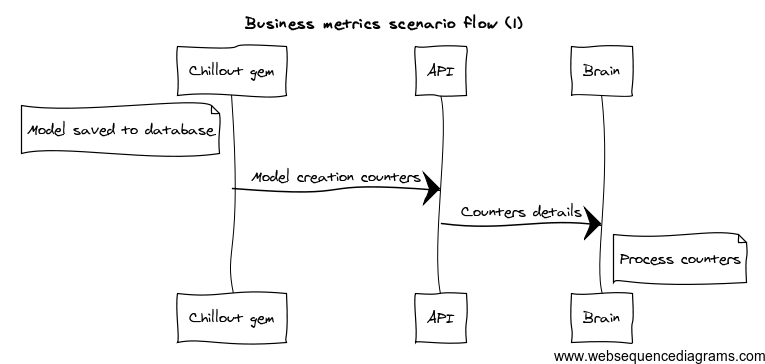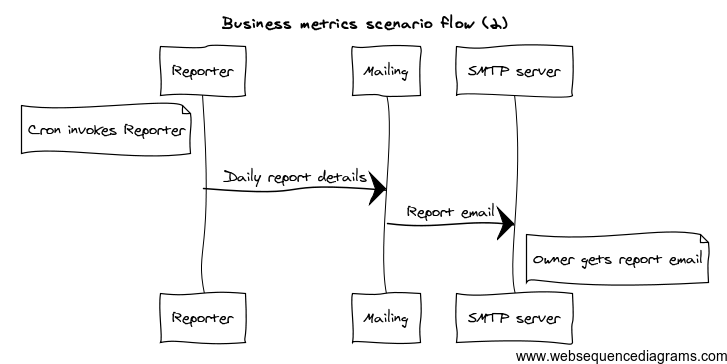Black-box Ruby tests
… and check why 5600+ Rails engineers read also this
Black-box Ruby tests
Chillout.io architecture is distributed - currently just as few processes on same production server. As professionals we decided to prepare integration tests for each of application (maybe in terms of their business we could call them acceptance tests), but that wasn’t enough - we wanted to expose business scenarios that we’re actually aiming in. We achieved that with fully black-box tests. Curious how we did that? Read on.
Architecture
Chillout.io purpose is to help Rails developers maintain existing projects - currently react on exception events and be up-to-date with simple business metrics like model creations. To provide this features its backend is splitted into following apps:
- api - API endpoint
- brain - decides how to react on messages from api
- brain-reporter - generates reports for customers
- mailing - sends email to customers
It has also gem dedicated to Rails applications, which communicates with our API.
Test runner
To test whole stack we have to run all apps + Rails server. Let’s have a look at our AcceptanceTestCase class:
class AcceptanceTestCase < MiniTest::Unit::TestCase
def commands_to_run
# Sample structure
[
["bundle exec ruby -Iapi/lib api/bin/chillout-api", {"BUNDLE_GEMFILE" => "api/Gemfile"}],
["bundle exec sample_rails_app/script/rails s --binding=127.0.0.1 --port=3000 --environment=production", ...]
...
]
end
def run(runner, &block)
output, pids = "F", []
begin
commands_to_run.each do |(cmd, env)|
Bundler.with_clean_env { pids << ProcessSpawner.new(cmd, env).spawn }
end
super
rescue => exc
runner.puke(self.class, self.__name__, exc)
return output
ensure
pids.each { |pid| ProcessSpawner.kill(pid) }
end
end
end
As you see we also have sample Rails app to make sure, that our gem really works. To make development easier configuration of that gem is hardcoded in this sample app, and this configuration is also hardcoded in our tests.
Scenario language
Business scenarios - stories or use cases - are defined with high-level terms, i.e. “Someone created model in Rails app, so at the beginning of next day (when scheduler trigger) owner should get email with report containing model’s counter increased by one”. To expose that business, our product’s real value, we use same terms in tests:
class SendingBusinessMetricsTest < AcceptanceTestCase
def setup
@name, @email, @token = "Rere", "email@example.org", '01234567890123456789012345678901'
@app = TestApp.new(@token)
@admin = TestAdmin.new
@owner = TestOwner.new(@email)
@scheduler = TestScheduler.new
end
def test_client_delivers_business_metrics
@admin.add_project(@name, @token)
@admin.add_recipients(@email)
@app.create_entity!("Dog")
@scheduler.invoke_daily_report
@owner.visit_last_email do |email|
email.find("h1").has!("Daily report")
email.find("p").has!("Dog: 1")
end
end
end
Here’s an explanation what really happens in scenario:
admin.add_projectandadmin.add_recipientsadd project and notification recipients to test database.app.create_entity!enters, using capybara-webkit, sample Rails app’s scaffold and create entity with “Dog” name- Scheduler execute shell command to run our reporter app.
- We run mailcatcher in background and owner use it to check if he got an email - he enters (also using capybara-webkit) it’s web interface and looks for given data - daily report.
As you can see all steps of this scenario are described in terms of real usage. If we’d describe how our product subcomponents cooperate to handle this use case it would look like this:
As a side note: approach of tests with actors was introduced in bbq gem.
Real black box
As you can see it is about what scenario actor’s will do in real life - one of them will get to Rails app and create some entity, scheduler (cron) will invoke daily report at given time, and then Rails app’s owner will go to web mail and see our notification.
All details about our architecture are not available on scenario level. If we decide to split one of our apps to few smaller we will just have to add new commands to run in AcceptanceTestClass. We can also show it to you to tell you about our new feature - automatic simple business metrics.
How do like this style of testing? Please leave a comment - maybe you have something better?
Did you like it?
Make sure to check our books, videos and bundles

